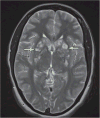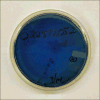Management of Cryptococcus gattii meningoencephalitis
- PMID: 25467646
- PMCID: PMC4481715
- DOI: 10.1016/S1473-3099(14)70945-4
Management of Cryptococcus gattii meningoencephalitis
Abstract
Cryptococcosis is a fungal disease caused by Cryptococcus neoformans and Cryptococcus gattii. By inhalation and subsequent pulmonary infection, it may disseminate to the CNS and cause meningitis or meningoencephalitis. Most cases occur in immunosuppressed hosts, including patients with HIV/AIDS, patients receiving immunosuppressing drugs, and solid organ transplant recipients. However, cryptococcosis also occurs in individuals with apparently healthy immune systems. A growing number of cases are caused by C gattii, with infections occurring in both immunosuppressed and immunocompetent individuals. In the majority of documented cases, treatment of C gattii infection of the CNS requires aggressive management of raised intracranial pressure along with standard antifungal therapy. Early cerebrospinal fluid evacuation is often needed through placement of a percutaneous lumbar drain or ventriculostomy. Furthermore, pharmacological immunosuppression with a high dose of dexamethasone is sometimes needed to ameliorate a persistently increased inflammatory response and to reduce intracranial pressure. In this Grand Round, we present the case of an otherwise healthy adolescent female patient, who, despite aggressive management, succumbed to C gattii meningoencephalitis. We also present a review of the existing literature and discuss optimum clinical management of meningoencephalitis caused by C gattii.
Copyright © 2015 Elsevier Ltd. All rights reserved.
Conflict of interest statement
KAM discloses that she has participated in advisory boards for Astellas, Merck, and Pfizer and received grants from Astellas, Merck, Pfizer, Enzon, and Schering Plough. All other authors declare no conflicts of interest.
Figures




References
-
- Perfect JR. Efficiently killing a sugar-coated yeast. N Engl J Med. 2013;368:1354–56. - PubMed
-
- Lin X, Heitman J. The biology of the Cryptococcus neoformans species complex. Annu Rev Microbiol. 2006;60:69–105. - PubMed
-
- Chayakulkeeree M, Perfect JR. Cryptococcosis. Infect Dis Clin North Am. 2006;20:507–44. - PubMed
Publication types
MeSH terms
Substances
Grants and funding
LinkOut - more resources
Full Text Sources

